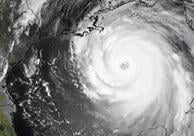Insurance Fraud
Insurance Fraud
A Basic Overview
The insurance industry consists of more than 7,000 companies that collect over $1 trillion in premiums each year. The massive size of the industry contributes significantly to the cost of insurance fraud by providing more opportunities and bigger incentives for committing illegal activities.
Costs of Fraud
The total cost of insurance fraud (non-health insurance) is estimated to be more than $40 billion per year. That means Insurance Fraud costs the average U.S. family between $400 and $700 per year in the form of increased premiums.
Common Schemes
Premium Diversion
- Premium diversion is the embezzlement of insurance premiums.
- It is the most common type of insurance fraud.
- Generally, an insurance agent fails to send premiums to the underwriter and instead keeps the money for personal use.
- Another common premium diversion scheme involves selling insurance without a license, collecting premiums and then not paying claims.
Fee Churning
- In fee churning, a series of intermediaries take commissions through reinsurance agreements.
- The initial premium is reduced by repeated commissions until there is no longer money to pay claims.
- The company left to pay the claims is often a business the conspirators have set up to fail.
- When viewed alone, each transaction appears to be legitimate—only after the cumulative effect is considered does fraud emerge.
Asset Diversion
- Asset diversion is the theft of insurance company assets.
- It occurs almost exclusively in the context of an acquisition or merger of an existing insurance company.
- Asset diversion often involves acquiring control of an insurance company with borrowed funds. After making the purchase, the subject uses the assets of the acquired company to pay off the debt. The remaining assets can then be diverted to the subject.
Workers’ Compensation Fraud
- Some entities purport to provide workers’ compensation insurance at a reduced cost and then misappropriate premium funds without ever providing insurance.
Scam Spotlight—Disaster-Related Fraud: Hurricane Katrina
Massive Storm, Massive Cost
 In late August 2005, Hurricane Katrina made landfall along America’s Gulf Coast.
In late August 2005, Hurricane Katrina made landfall along America’s Gulf Coast.- The storm caused approximately $100 billion in economic damages.
- Approximately 1.6 million insurance claims were filed, totaling $34.4 billion in insured losses.
- Of the $80 billion in government funding appropriated for reconstruction, it is estimated that Insurance Fraud may have accounted for as much as $6 billion.
Disaster Fraud Schemes
- False or exaggerated claims by policyholders.
- Misclassification of flood damage as wind, fire, or theft.
- Claims filed by individuals residing hundreds of miles outside the disaster-zone.
- Bid-rigging by contractors, falsely inflating the cost of repairs.
- Contractors requiring upfront payment for services, then failing to perform the agreed upon repairs.
- Charity fraud scams designed to misappropriate funds donated for disaster relief.
The Government Response
- On September 8, 2005, the Attorney General created the Hurricane Katrina Fraud Task Force (HKTF).
- The HKTF was designed to deter, investigate, and prosecute disaster-related federal crimes.
- The HKTF has a zero-tolerance policy for fraud related to Hurricane Katrina.
- In one Katrina-Related fraud case alone, the FBI received more than 70 indictments and over 60 guilty pleas (as of March 2007).
Insurance Fraud Resources
For more information about Insurance Fraud or where to report it, contact the following organizations.
Fraud Bureaus
Check to see if your state sponsors a fraud bureau that investigates insurance fraud—most states do. You may even be eligible for a reward if you report a scam.
Insurance Companies
Go directly to the insurer you think is being defrauded. Some companies have systems in place for reporting fraud. If the company doesn’t have a reporting system or fraud hotline, call or write the company headquarters.
National Insurance Crime Bureau (NICB)
(800) 835-6422
The NICB is a non-profit organization that partners with insurance companies and law enforcement to help identify, detect, and prosecute insurance criminals. The NICB web site is an excellent source of information.
Coalition Against Insurance Fraud (CAIF)
The CAIF is a national alliance of consumer groups, public interest organizations, government agencies, and insurers dedicated to preventing insurance fraud. The CAIF website offers a wealth of information for consumers.
National Association of Insurance Commissioners (NAIC)
The NAIC assists state insurance regulators in serving the public interest and achieving regulatory goals. You can find numerous fraud resources on the NAIC website.
Individuals are always encouraged to report Insurance Frauds to their local FBI offices.

